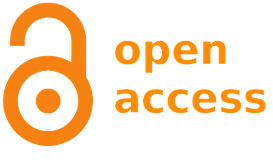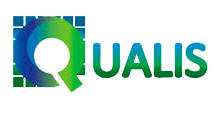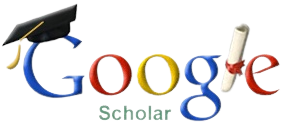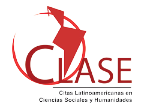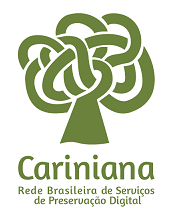Application of the triangulation of methods to evaluate the usability in specialized digital information enviroments: study in the CoDAF website
DOI:
https://doi.org/10.5433/1981-8920.2018v23n3p586Keywords:
Information enviroment, Information architecture, Usability, CoDAF Website, Eye trackingAbstract
Introduction: Information Architecture and usability studies can provide theoretical and practical subsidies to support the development of digital information environments that publish content for specific segments, with Family Farming being a sector that can benefit from specialized content sharing. The CoDAF portal is a digital information environment that provides content related to agriculture, and can address information needs of small producers, potential consumers and other agents of society, that seek information on Family Farming, resulting in a target audience with heterogeneous characteristics. It is questioned about how the informational architecture of an environment specialized in the availability of contents of, and for, small producers is organized, and how an usability diagnosis can be made to verify its effectiveness. Objective: To demonstrate the application and combination of usability evaluation methods in order to verify the quality of the interaction and adherence of the content of the CoDAF portal. Methodology: Triangulation of three procedures for evaluation of usability: heuristic analysis, measurement of performance by means of the Eye Tracking technique, and questionnaires. Results: The topics identified in the execution of each procedure for usability analysis are presented, highlighting the contributions when used in combination. Conclusion: The importance of triangulation between procedures to evaluate usability, and the contribution to Information Science once it demonstrated, in a practical way, the application of theories from the Information Architecture, is emphasized, subsidizing research that involves evaluation. in specialized digital information environments.Downloads
References
BEVAN, N. Usability is Quality of Use. In: INTERNATIONAL CONFERENCE ON HUMAM COMPUTER INTERACTION, 6, 1995, Yokohoma. Anais...Yokohoma: Elsevier, 1995.
BOJKO, A. Eye Tracking the User Experience: A Practical Guide to Research. New York: Rosenfeld Media, 2013.
BOJKO, A. Eye tracking in user experience testing: How to make the most of it. In: PROCEEDINGS OF THE USABILITY PROFESSIONALS ASSOCIATION UPA CONFERENCE, 2005, Quebec. 2005.
BORKO, H. Information Science: What is it? American Documentation, v. 19, n. 1, 1968.
DENZIN, N. K. The Research Act. Englewood Cliffs: Prentice Hall, 1989.
GOLDBERG, J. H.; KOTVAL, X. P. Computer interface evaluation using eye movements: methods and constructs. International Journal of Industrial Ergonomics, v. 24, n. 6, p. 631-645, 1999.
JUST, M. A.; CARPENTER, P. A. Eye fixations and cognitive processes. Cognitive Psychology, v. 8, p. 441-480, 1976.
KLEIN A. I.; BULLA, J. P. Eye-Tracking e linguística: aplicações e interfaces. Eletrônica: Revista Digital do PPGL, v. 3, n. 2, p. 235-249, 2010.
LUEGI, P.; COSTA, A.; FARIA, I. H. Analisando os comportamentos oculares durante a leitura. Revista Lingüística, v .5, n. 1, p. 62-80, 2010.
MOREIRA, F. M. et al. Acesso às informações sobre Agricultura Familiar na Web. In: SEMINÁRIO EM CIÊNCIA DA INFORMAÇÃO (SECIN), 6, 2016. Anais...Londrina: UEL, 2016.
NIELSEN, J. Usability Engineering. New Jersey: Academic Press, 1993.
NIELSEN, J. Why You Only Need to Test with 5 Users. 2000. Disponível em: https://www.nngroup.com/articles/why-you-only-need-to-test-with-5-users. Acesso em: 4 set. 2016.
NIELSEN, J.; LORANGER, H. Usabilidade na web. Rio de Janeiro: Elsevier, 2007.
PERNICE, K.; NIELSEN, J. How to conduct eyetracking studies. Fremont: Nielsen Norman Group, 2009. Disponível em: https://www.nngroup.com/reports/how-to-conduct-eyetracking-studies/. Acesso em: 30 ago. 2016.
POOL, A.; BALL, L. J. Eye Tracking in Human-Computer Interaction and Usability Research: Current Status and Future, v. 780, 2005.
RESMINI, A.; ROSATI, L. Pervasive Information Architecture: Designing Cross-Chanel User Experiences. Burlington: Elsevier, 2011.
RODAS, C. M.; MARCOS, M. C.; VIDOTTI, S. A. B. G. Tecnologia de Eye Tracking em user experience. In: ENCONTRO NACIONAL DE GESTÃO, POLÍTICAS E TECNOLOGIA DA INFORMAÇÃO (ENGI), 2014, Goiânia. Anais eletrônicos... Goiás: UFG, 2014. p. 1-8. Disponível em: http://hdl.handle.net/11449/141461. Acesso em: 06 jan. 2017.
RODAS, C. M.; VIDOTTI, S. A. B. G. Eye Tracking em interface do google: a influência do elemento "Rich Snippet". In: SEMINÁRIO EM CIÊNCIA DA INFORMAÇÃO (SECIN), 6, 2016, Londrina. Anais eletrônicos... Londrina: UEL, 2016. Disponível em: http://www.uel.br/eventos/cinf/index.php/secin2016/secin2016/paper/viewFile/354/210. Acesso em: 31 ago. 2016.
ROSENFELD, L.; MORVILLE, P.; ARANGO, J. Information Architecture: For the Web and Beyond. 4. ed. Sebastopol/CA: O’Reilly, 2015, 485 p.
TEIXEIRA, T. M. C.; VALENTIM, M. L. P. Estratégias para disseminação do Conhecimento Organizacional: o papel da arquitetura da informação. Informação&Informação, v. 17, n. 3, p. 165-180, 2012.
TROIAN, A.; KLEIN, A. L.; DALCIN, D. Relato de caso: novidades e inovações na Agricultura Familiar: debates e discussões da produção de tecnologias. Revista Brasileira de Agropecuária Sustentável, Viçosa, v. 1, n. 1, p. 6-17, 2011.
VECHIATO, F. L.; VIDOTTI, S. A. B. G. Usabilidade em ambientes informacionais digitais: fundamentos e avaliação. In: CONGRESSO NACIONAL DE BIBLIOTECÁRIOS, ARQUIVISTAS E DOCUMENTALISTAS (BAD), 11, 2012, Lisboa. Anais... Lisboa: Associação Portuguesa de Bibliotecários, Arquivistas e Documentalistas, 2012.
VECHIATO, F. L.; VIDOTTI, S. A. B. G. Encontrabilidade da informação: atributos e recomendações para ambientes informacionais digitais. Informação & Tecnologia (ITEC), v. 1, 2014.
VIDOTTI, S. A. B. G.; CUSIN, C. A.; CORRADI, J. A. M. Acessibilidade digital sob o prisma da Arquitetura da Informação. In: GUIMARÃES, J. A. C.; FUJITA M. S. L. Ensino e pesquisa em Biblioteconomia no Brasil: a emergência de um novo olhar. São Paulo: Cultura Acadêmica, 2008.
Downloads
Published
How to Cite
Issue
Section
License
A revista se reserva o direito de efetuar, nos originais, alterações de ordem normativa, ortográfica e gramatical, com vistas a manter o padrão culto da língua e a credibilidade do veículo. Respeitará, no entanto, o estilo de escrever dos autores. Alterações, correções ou sugestões de ordem conceitual serão encaminhadas aos autores, quando necessário.
O conteúdo dos textos e a citação e uso de imagens submetidas são de inteira responsabilidade dos autores.
Em todas as citações posteriores, deverá ser consignada a fonte original de publicação, no caso a Informação & Informação.




